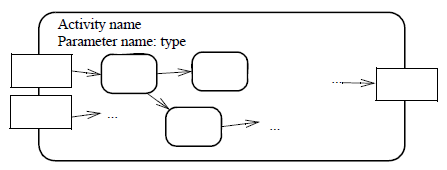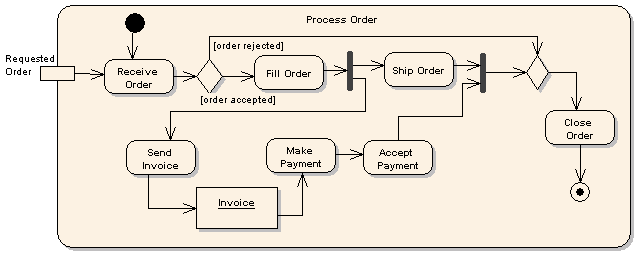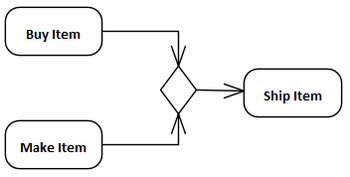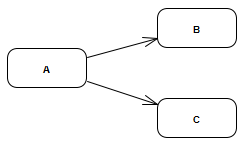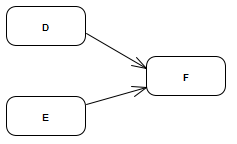UML Activity Diagram
Jump to navigation
Jump to search
Activity Diagram⌘
- Describes the workflow behavior of a system, focuses on flows.
- A Process describes a sequence or flow of Activities in an organization with the objective of carrying out work.
Activity, Action⌘
Activity
- describes a sequence of actions based on control models and object flow models
- contains edges and activity nodes (e.g. actions)
- represented by a rectangle with rounded corners
Action
- is a fundamental unit of executable functionality contained within an Activity
- represents a single step within an activity
Activity ⌘
Activity contains nodes:
- Action
- Object
- Control Node
and edges:
- Control Flow
- Object Flow
Control Flow⌘
- A control flow is an edge that starts an activity node after the previous one is finished
Object Flow⌘
- An object flow is an activity edge that can have objects or data passing along it
Objects⌘
- Incoming or outgoing objects are parameters
- Placed (as rectangles) on the border
- Or as small rectangle, called a pin (input or output)
Token⌘
- The semantics of an activity is based on a token flow
- Control tokens and object tokens flow between nodes over edges
Activity Example⌘
Initial Node⌘
- It has outgoing edges but no incoming edges
- An activity may have more than one initial node
- Each generates a concurrent flow
- An initial node can have more than one outgoing edge
- Semantics: a control token at each outgoing edge
- Activity diagrams do not have to have initial nodes
- Notation: a filled circle
Final Node⌘
- An activity may have more than one activity final node
- The first one reached stops all flows in the activity
- Regardless of the number of tokens in activity
- At least one incoming edge and no outgoing edges
- If several incoming edges only one must carry a token
- Activity diagrams do not have to have final nodes
- Notation: a filled circle with an outer ring
Decision⌘
- is a control node that chooses between outgoing flows
- One incoming edge and several outgoing edges
- When a token is supplied guards on outgoing edges are evaluated
- Token goes to first true outgoing
- Notation: a rhombus
Merge⌘
- A merge node is a control node that brings together multiple alternate flows
- It is not used to synchronize concurrent flows
- Several incoming edges, one outgoing edge
- Nothing calculated, nothing expected
- Notation: an empty rhombus
Fork, Join⌘
- Fork – one incoming edge and multiple outgoing edges
- Join – multiple incoming edges and one outgoing edge
Implicit splitting⌘
Once action A terminates
- a control token is available at both outgoing edges
- actions B and C start concurrently
Implicit synchronization⌘
Action F doesn't start until tokens are available at both incoming edges - actions D and E have to terminate
Implicit split/synchronization - object flow⌘
AND semantics for object flows
- Once action A terminates it provides two object nodes
- Action F doesn't start until object tokens are available at both incoming edges - actions D and E have to terminate







